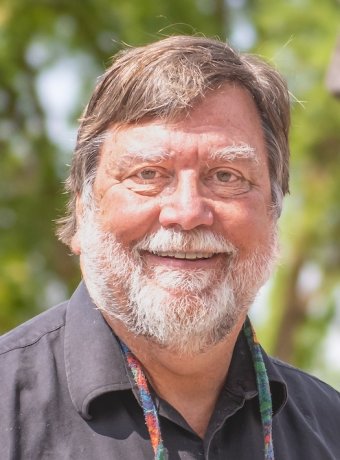Michael E. Mullins

Contact
- memullin@mtu.edu
- 906-487-1445
- Chem Sci 301
- Professor, Chemical Engineering
- PhD, University of Rochester
Biography
Catalysis, Reactor design and modelling
For the past 30 years, a large portion of our research and consulting has dealt with
reactor modeling and catalysis for energy and environmental applications. Specifically,
we have developed an expertise in multiphase reactor design for a wide range of processes
ranging from the hydrotreatment of pyrolysis oil for transportation fuels, to designing
the water treatment reactor on the International Space Station (ISS). In many ways
the design of chemical reactors is still an art, and attempts to develop robust reactor
design software have had limited success. Commercial “black box” process simulators
(e.g. ASPEN or UNISIM) simply cannot provide detailed multiphase reactor analyses.
To fill this gap, my research group has developed experimental data, models and associated
computer applications to perform more detailed, process-level reactor analysis. With
sponsorship from the EPA, we developed the Heuristics and Reactor Design (HARD) models
in which environmental and energy objectives are major design elements. There is a
recognized need for this type of process-level analysis to improve Life Cycle Assessment
(LCA) studies for biofuel production. As a result, we have been working on NSF and
DOE research projects focused on the hydrotreatment (HDT) of pyrolysis oil and plant
oils to produce renewable diesel in which we are using these models. This process-level
approach has brought a fresh perspective to the analysis of biofuel production, and
the results have improved the prediction of environmental impacts, energy efficiency,
economic performance, and LCA models. I am currently the Fulbright Distinguished Chair
in Alternative Energy at Chalmers University in Sweden where we are building upon
our past work by using our approach to study the hydrotreatment of several different
biofuel feedstocks to produce transportation fuels. By analyzing this paradigm process,
our method can be extended not only to study other biorefinery processes, but other
chemical industries as well.
New Materials Discovery
We are exploring methods to make novel nanoscale structures for use as electrodes,
catalysts, biomaterials, and membranes. Specific current research includes the development
of polymer/inorganic nanofibers for tissue scaffolds, electrosynthesis of new hybrid
materials, porous carbon electrodes for battery and fuel cell applications, the development
of zeolite membranes for gas phase separations and reactions, the production of nanometer
scale polymer/ceramic particles, and the synthesis of polymer inorganic nanocomposites
for biomedical, electronic and photonic applications. We employ sol-gel synthesis,
polymers, vapor, and plasma techniques to achieve unique catalytic, electronic, or
physical properties. Our group uses a variety of spectroscopic techniques including
FTIR and FT-Raman. We also characterize materials via cyclic voltammetry, TGA/DSC,
gas adsorption/BET, and mass spectrometry to elucidate the chemistry and structure
of the materials.
Environmental Thermodynamics and Fate Assessment
An understanding of the partitioning and reaction of contaminants in the environment
is crucial to the design of clean industrial processes and for fate assessment studies.
Whether these contaminants end up in groundwater soil air or even if these contaminants
end up in groundwater, soil, air, or even in humans is a function of their thermodynamic
behavior in each of these compartments. Since most environmental contaminants are
dilute, we have spent the past decade studying dilute solution thermodynamics and
partitioning experimentally and theoretically. We have been involved in measuring
vapor-liquid equilibria for mixed solvent/electrolyte systems, and developing models
to predict the behavior of such systems.
Links of Interest
Teaching Interests
- Thermodynamics
- Reactor Design
Research Interests
- Catalysis, reactor design, and thermodynamics
- Engineered nanostructures